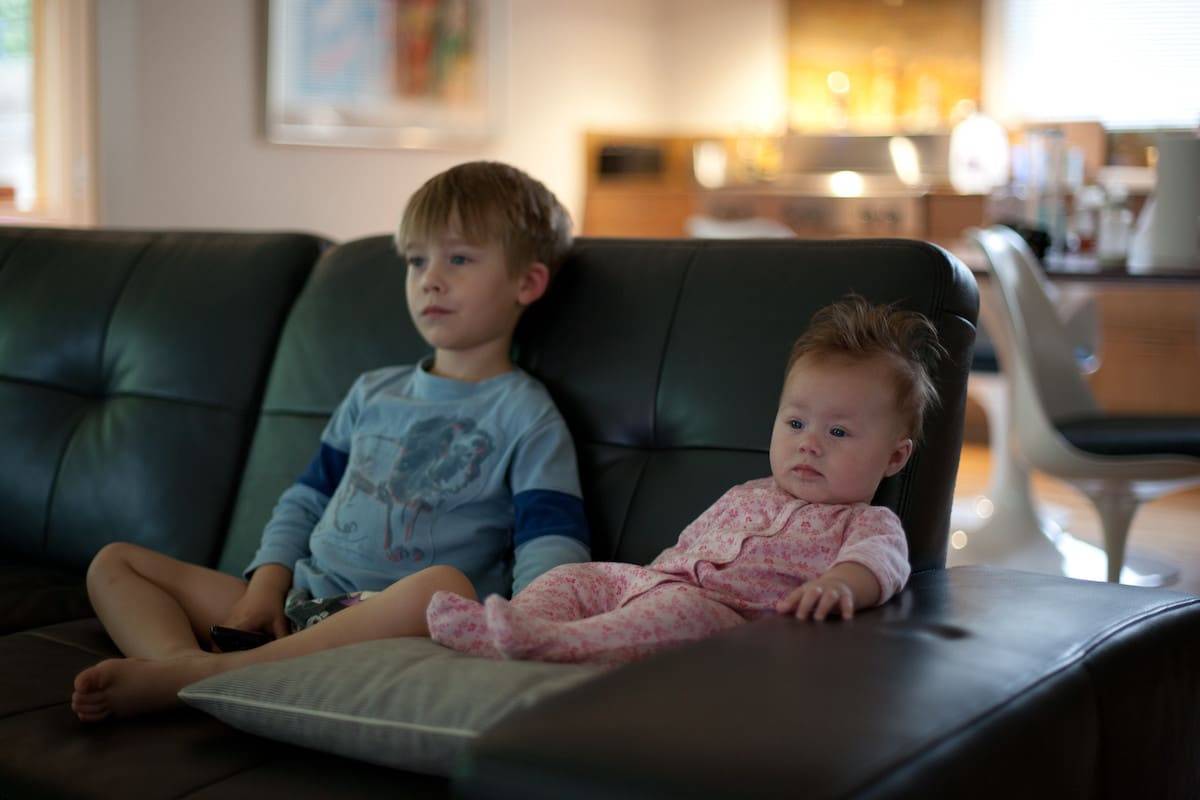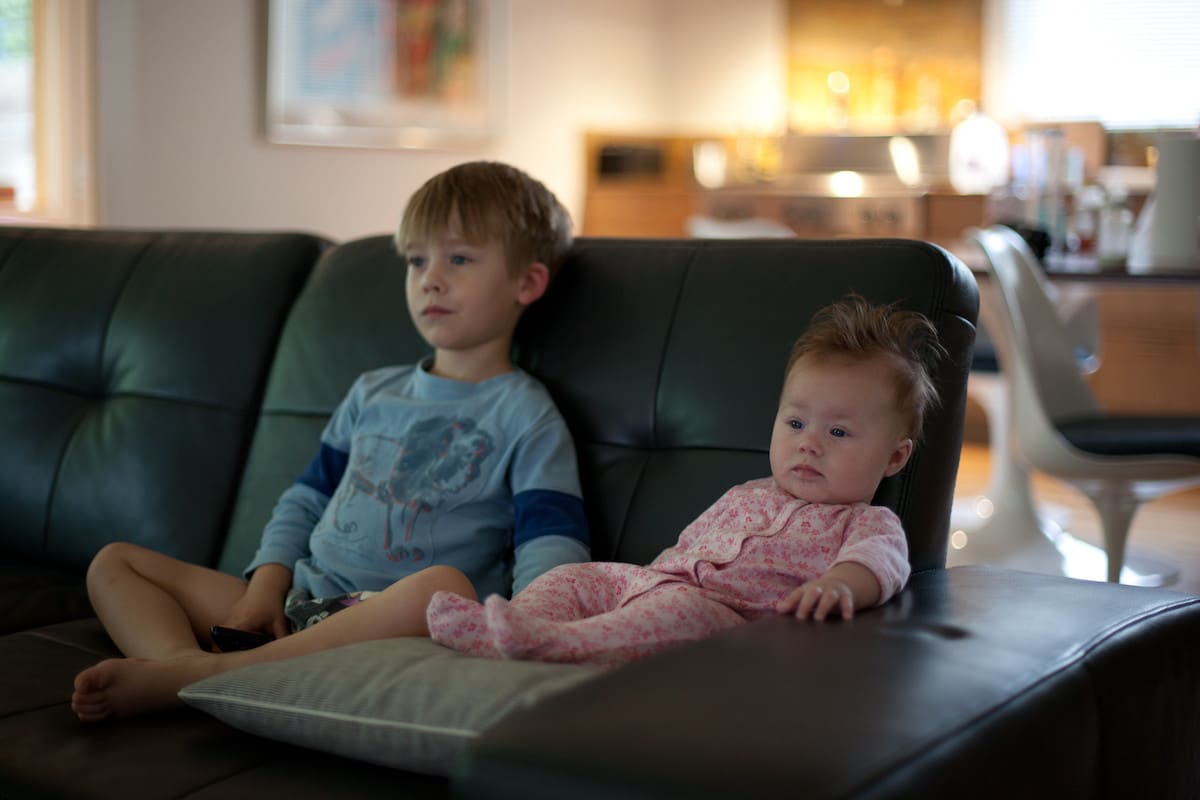Considering the impacts of television exposure on toddlers’ dysregulation: Does culture matter?

This post is part of our series on Digital Media and Children Under 3, published with collaboration from the journal, Infant Behavior and Development. The featured research appeared in a special issue that focused on how young children engage with technology and ways that parents can facilitate media engagement to promote positive development.
Key takeaways for caregivers
- Self-regulation – the ability to monitor and manage behaviors and emotions – is a critical aspect of early childhood development.
- Television viewing is associated with lower levels of self-regulation, or greater levels of dysregulation, in young children, especially difficulties in attention and self-soothing.
- The specific impact of TV exposure on dysregulation may differ across cultures, perhaps stemming from different cultural or family practices around TV viewing experiences.
- Parents and caregivers should limit TV viewing for young children, but can also consider how to help their child understand and engage with high-quality programming.
What should parents know about the risks of television viewing for young children?
Exposure to television and other digital media is frequently discussed and often discouraged, but many parents and caregivers might wonder, “What is the harm?” and “Is all television bad?” The American Academy of Pediatrics (AAP) recommends that digital media be avoided for children under 18 months, with the exception of video chatting. For parents who wish to introduce digital media between 18 and 24 months, the AAP advises choosing “high-quality programming” (American Academy of Pediatrics, 2016).
However, as we progress further in the digital age, children are being introduced to many forms of media at younger ages. Television and other electronic devices may serve as “electronic babysitters,” especially for infants and young children whose temperaments are considered “difficult.”
Additionally, much more media is being targeted to the youngest age groups. Another facet to consider is the nuances of digital media, such as different types of programming and devices (e.g., TV, tablet, cell phone). What, specifically, should parents and caregivers be concerned about?

Photo: Lars Plougmann. Creative Commons.
Television viewing and the development of self-regulation in young children
When it comes to the impact of early television exposure, concerns regarding reactivity and self-regulation are notable. Reactivity describes the intensity of our response to our world, such as how strongly we feel excitement or fear, or how strongly we react to sensory information (e.g., sights and sounds). Regulation is the processes of monitoring and managing reactivity to the world around us and our internal experiences. This includes how we express emotion, where we put our attention, and how we think about and change our thinking (see Rothbart et al., 2000, for a review).
In early infancy, we rely on others to help us regulate, such as by soothing us. However, as we mature, we gain more independence and the capacity to regulate ourselves. Self-regulation helps children learn, engage with others, and gain independence. When reactivity (e.g., anger/frustration or fearfulness) is elevated and regulation abilities are low, dysregulation can occur.
Studying the links between children’s TV exposure and dysregulation across cultures
We conducted a study to determine whether exposure to television contributes to deficits in regulation in young children. Early childhood is a foundational period for the development of self-regulation, and television exposure is thought to disrupt related processes. In some studies, frequent TV exposure during and before toddlerhood has been associated with an increased risk of language delays, attention difficulties, and disruptions in the development of executive functioning (e.g., working memory, inhibition, problem-solving skills).
We also examined whether links between early childhood television exposure and regulation development differ across cultures. While children around the world are exposed to TV in early childhood, associated risks may not be universal. Different socialization and cultural aspects of the environment can lead to differences in the development of reactivity and regulation.
Our research suggests that higher levels of dysregulation are associated with more television viewing in young children, with soothability and attention problems being the most commonly affected.
For example, several cross-cultural studies have found differences in children’s inhibitory control (controlling urges), soothability (ability to calm down or recover from stress), cuddliness (willingness to be cuddled), attention (ability to focus and redirect), low intensity pleasure (ability to enjoy quiet and calm activities), surgency (positive affect), and negative emotionality (tendency to show negative emotions).
Given these cross-cultural differences in regulation, it is critical to understand how variability in TV exposure across cultures contributes to subsequent behavioral and emotional difficulties. We conducted an international investigation of television exposure in toddlers (approximately 15 months to 41 months old) in 14 countries: Belgium, Brazil, Chile, China, Finland, Italy, Mexico, the Netherlands, Romania, Russia, Turkey, South Korea, Spain, and the United States.
Using a variety of measures, we asked parents to answer questions about their child’s daily activities, including how much time their child spends watching television each day. We also asked parents to answer questions about their child’s temperament, including reactivity and regulation.

Photo: William Fortunato. Pexels.
Cross-cultural links among television exposure, attention problems, and soothability
Overall, we found that increased time spent watching television was associated with more dysregulation. That is, the more time toddlers spent watching television, the lower ratings parents provided on measures of regulation.
However, links between TV exposure and both attention problems (difficulty shifting or maintaining attention) and soothability (the ease with which the child could self-soothe or be soothed by others) varied significantly between cultures. For example, compared to children from other cultures, for Spanish toddlers, time spent watching TV was less strongly associated with dysregulation, whereas for Dutch children, time spent watching TV was more strongly associated with problems with soothability and attention problems.
While our study did not investigate the causes of these differences, some cultures may offer protective mechanisms that buffer against adverse effects of TV exposure. For example, many Spanish families watch television together, with TV-related activities constituting one element of family time, rather than relying on TV as an electronic babysitter.
This practice could stem from the central theme of familismo that is traditionally valued by individuals from Hispanic cultures, and includes strong attachment, loyalty, reciprocity, and solidarity among families (Diaz-Loving & Draguns, 1999). Researchers should examine more closely this concept as well as other possible protective effects.
How to reduce the negative impacts of television viewing for young children
Our research suggests that higher levels of dysregulation are associated with more television viewing in young children, with soothability and attention problems being the most commonly affected. These findings add to previous studies that have shown that even background television can have negative impacts on children’s play and parent-child interactions by decreasing attention and active engagement in both children and parents.
Thus, any potential benefits of television stimulation as a new source of entertainment and distraction for young children appear short lived, with likely adverse effects in the long term. Some benefits of educational programming have been reported across cultures; however, these generally show up later in childhood, after children have developed foundational self-regulation skills.
Television viewing might affect children differently depending on a variety of environmental factors, including cultural and familial customs.
Together, the research shows that limiting television exposure could help limit certain aspects of dysregulation. Yet television viewing might affect children differently depending on a variety of environmental factors, including cultural and familial customs. When families or younger children watch TV, some protective factors may emerge through cultural differences, such as the possibility that some cultures incorporate family engagement into television use.
In summary, it is important to consider not only the age when children engage with media content but also how they contextualize it and how it fits into their world. Television programming could be developed to provide more developmentally appropriate stimulation to young children, especially when paired with parental engagement and application to real-world experiences.
Thus, it is important to monitor the amount and type of programming children are watching and how they are engaging with television. It is also important for parents and caregivers to talk about and teach children how TV programming can be meaningful in their daily lives.
















Leave a comment